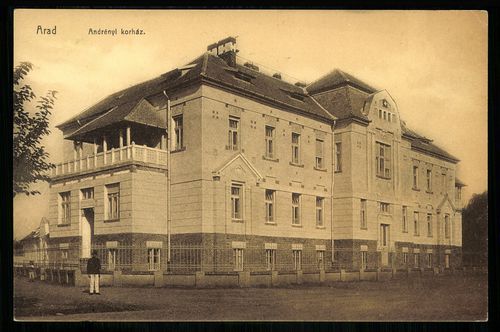In the “Belle Époque” that ended with the Great War, Arad (now in Western Romania) was a burgeoning trade and industrial city with a population of just over 60,000 and a rich cultural life. As was typical of the times, social infrastructure was struggling to keep up with economic development.
So it was that a rich merchant’s firstborn son fell ill with what seemed like a minor digestive problem, which worsened rapidly. As the city had no pediatric hospital, the merchant – Károly Andrényi, made baron for his contribution to the city’s development – sent a telegram to the best children’s surgeon in Budapest, who boarded a train post-haste. But by the time he arrived the following day, the child had already succumbed to a perforated appendix.
Andrényi, owner of a large regional wholesale operation, was already known for the humane treatment of his employees and generous contributions to the city’s poor. Arad’s White Cross charity had for years been planning the construction of a much-needed children’s hospital, but both the charity and the city lacked the necessary funds. Prompted by the death of his son, Andrényi set up a foundation to build a hospital and endowed it with 200,000 crowns, the equivalent of a member of parliament’s salary for twenty years.
Construction began in 1908.

And the rest is history: the next Andrényi-generation continued to flourish right through the years of World War II and their enterprise was Romania’s largest taxpayer in 1943. But after the Communist takeover all their possessions have been nationalized. The old baron – not one to easily give up – made his living by carting sand, his eldest son operated a vacuum truck and his younger son worked night shifts as a slaughterhouse electrician.